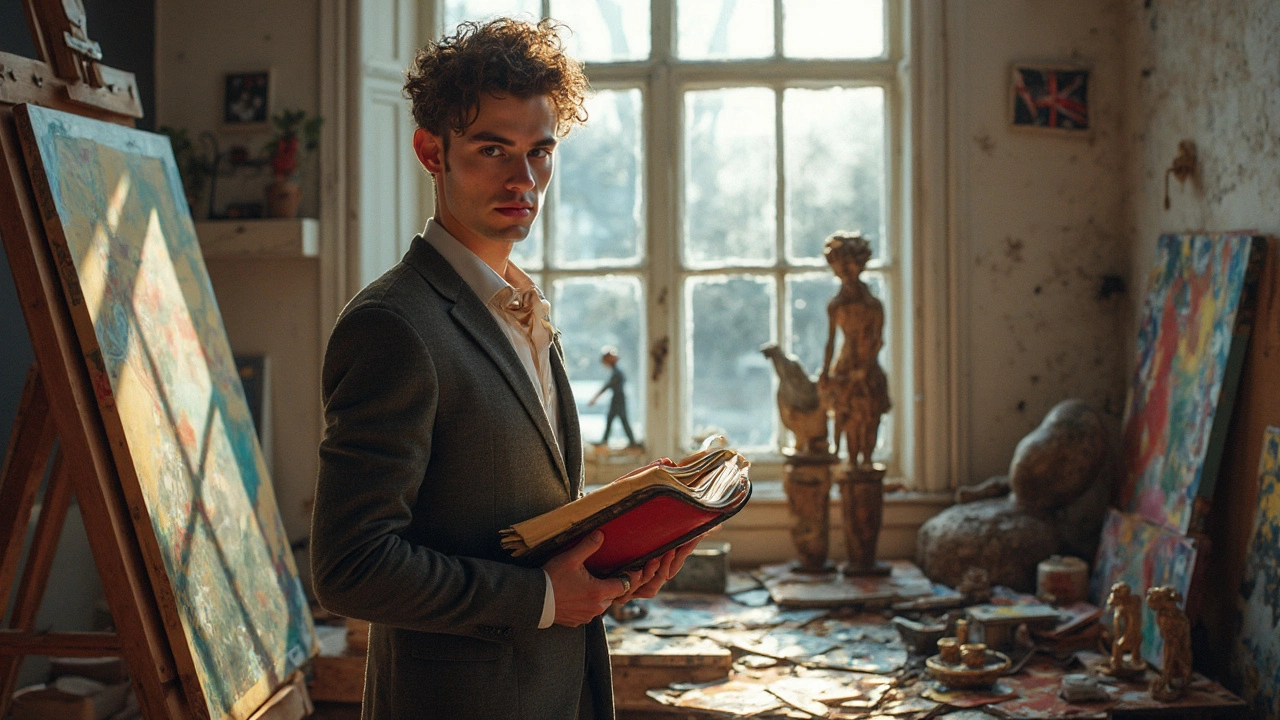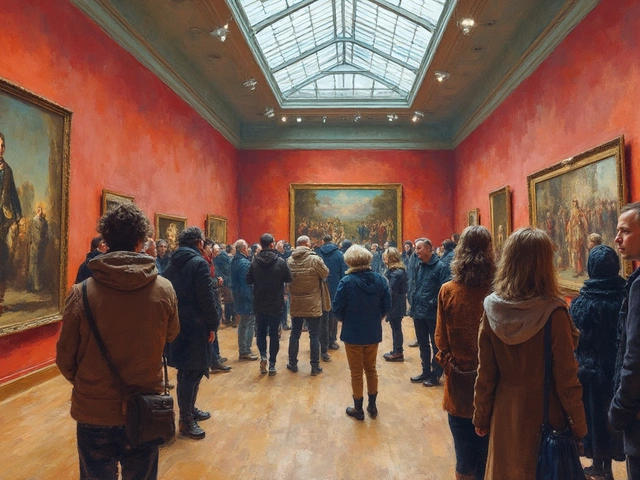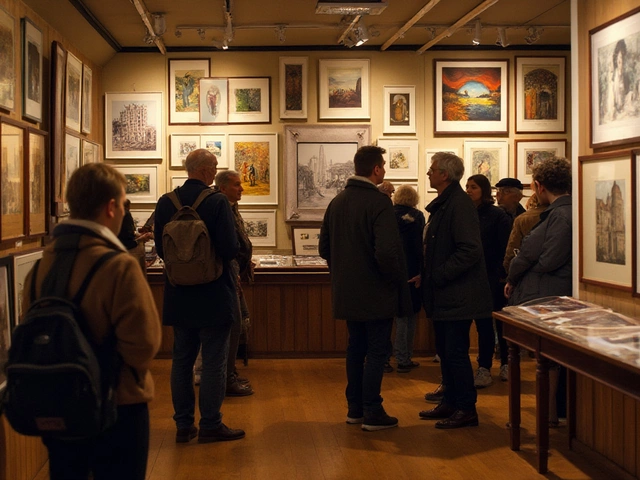What do gallery owners and curators really look for in new artists? It’s not just about the art. They scan every tiny detail—your vibe, your professionalism, even your email’s grammar. If you’re thinking it’s all about pure talent, you’ll want to keep reading.
The obvious first step? Consistency. Galleries want to see a clear voice and intentional style. If your portfolio flips from realistic oil portraits to huge neon abstracts with no common thread, you send the message that you don’t know who you are as an artist. This single mistake lands a load of artists straight in the rejection pile.
- The Basics Galleries Can't Ignore
- Portfolio Tricks That Actually Work
- How Your Story Hooks a Curator
- Relationship Building: It’s Not Just Who You Know
- Handling Rejection (and Turning It Around)
The Basics Galleries Can't Ignore
When it comes to picking new artists, art galleries zero in on the fundamentals before anything else. The art itself has to be solid and consistent—nobody wants to gamble on someone whose style is all over the place. A clear artistic identity tells a gallery you’ve put in the hours and know exactly what you’re about.
Professionalism isn’t just a bonus—it’s a deal breaker. Galleries pay close attention to how you present yourself. This means your online presence, how you talk about your work, and whether you respond quickly to emails. Some gallery directors say they give up on over half of submissions just because the application isn’t complete or the email is sloppy.
- Portfolio Quality: Galleries look for a strong, cohesive body of work. Everything you show should look like it belongs together, almost like chapters from the same book.
- Exhibition Readiness: No gallery wants to teach you basic prep. They expect you to know how to frame, hang, and transport your artwork without drama. Sometimes you’ll even be asked if your work can survive a two-day truck ride—really.
- Sales Track Record: This isn’t a must-have, but showing you've sold pieces before makes you less of a risk. One small gallery in Chicago admitted they note your price range and whether your art has actually moved before. That matters more than most artists want to believe.
- Originality: Gallery reps are tired of seeing endless lookalike art. If your work stands out and doesn’t just ride the current trend wave, you’ve got a leg up. Be authentic, not just popular.
Here’s a quick look at what 50 American galleries said were their top “must-haves” in a 2023 survey:
| Criteria | % Ranking as Essential |
|---|---|
| Consistent Artistic Style | 88% |
| Professional Presentation | 78% |
| Originality | 64% |
| Previous Exhibition Experience | 53% |
At the end of the day, these basics can’t just be faked. It takes time for your work to develop its own identity and for you to build the habits that feel natural—professional emails, solid prep, and meeting deadlines with zero excuses. If you get these right, you’re already ahead of most of the artist selection hopefuls out there.
Portfolio Tricks That Actually Work
Your art galleries dream doesn’t start with “make cool art.” It starts with a killer portfolio. If you send a dump of random images, that’s a fast track to a deleted email. Gallery folks want to flip through your work and instantly know what you care about—so keep things tight and memorable.
Here’s the trick: Don’t put everything you’ve ever made into one folder. Pick 8 to 15 pieces that show a strong sense of identity. Several respected gallerists have said publicly that most artists should never submit more than 20 works. Why? Too much stuff just confuses the curator. They’re looking for threads—themes, technique, and energy—that connect your work. Show growth, yes, but avoid wild left turns.
- Put your strongest piece first. The opener should make them want to see more.
- Add short captions: title, medium, size, year. Make it super easy to know what they’re looking at—no one wants to dig for info.
- Show works that actually fit the art exhibitions or gallery’s vibe. Do your homework. Submitting graffiti art to a gallery that mostly features traditional landscapes? That’s a wasted shot.
- Avoid fuzzy phone pics—gallery directors have literally skipped artists whose images weren’t sharp. Use natural light, stick to clean backgrounds, and show details where it matters.
- Include one sheet or PDF with a short bio and an artist statement. Two short paragraphs, max—nobody reads an essay here.
| Portfolio Element | Reason It Matters |
|---|---|
| Consistent Theme | Galleries want artists with a clear point of view |
| High-Quality Images | Poor visuals make even great art look weak |
| Tailored Selections | Shows you understand the gallery’s focus |
Keep it simple, well-organized, and make sure your artist selection portfolio lines up with what the gallery is already excited about. It’s about proof: you’re not just an artist—you’re the right fit for gallery representation. That’s how you get picked.
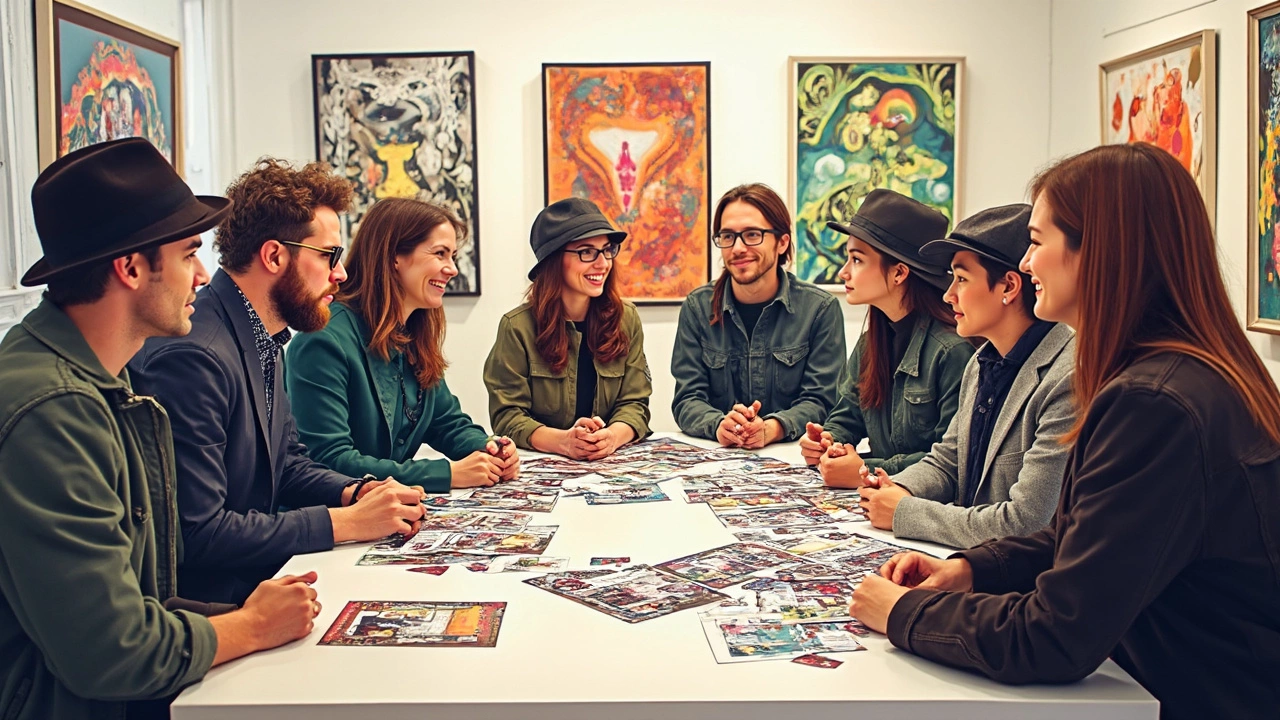
How Your Story Hooks a Curator
Ever wonder why some artists grab a curator’s attention, even when their work isn’t the flashiest in the room? It’s all about having a solid story. Gallery curators love when an artist’s backstory and personality hook you in, making the art exhibitions more personal and memorable.
A smart art galleries tip—curators often want to understand not just what you make, but why you make it. When you clearly convey what drives you, whether it’s childhood experiences, cultural roots, or a quirky obsession, your work just feels more authentic. This makes it way easier for them to pitch your art to collectors and press.
Your "About" text isn’t just filler for your website. It connects your pieces together for the curator, showing you have purpose. Here’s what should stand out:
- Authenticity beats drama. Honest details about your process or journey ring true more than some over-the-top tale.
- Tie your story to your work. Your background or focus should explain the style or topics you keep returning to in your portfolio.
- Keep it short and sharp. Curators are busy. A couple sharp paragraphs, not a full autobiography.
Research shows that buyers in art galleries are over twice as likely to remember and talk about an artist when they have a memorable story or mission behind their work. This isn’t just fluff—it's your chance to make your art stick in their mind.
Need a simple trick? Talk about your influences and what you hope people feel when they see your work. That personal touch goes a long way in connecting you with curators, and helps you stand out among the hundreds of artists pitching to gallery representation every year.
Relationship Building: It’s Not Just Who You Know
Think art galleries only give shows to their tight circle? Not really. Building the right relationships can make a huge difference, but it’s more about how you connect than who you schmooze. Curators and gallery owners notice artists who are active in their scene—whether that means showing up at other artists’ openings, dropping thoughtful comments on Instagram, or just chatting at the café nearby after a show.
Statistically, about 65% of emerging artists land spots in art exhibitions thanks to connections formed through casual meet-ups and online engagement. But before you roll your eyes: these aren’t secret handshakes. They’re real conversations and showing genuine interest—not just pushing your own agenda.
- Show up at local openings and say a quick ‘hi’ to the people hosting. Even one or two genuine connections work way better than blasting mass emails.
- Follow galleries and curators you admire on social media. Engage with their posts in a thoughtful way instead of begging them to look at your portfolio.
- Support other artists by sharing their work or attending their shows. People remember the folks who support them when opportunities pop up.
The truth: galleries are flooded with cold emails from strangers. But when you put in the time to learn about a gallery, chat with staff, and understand their recent exhibits, you’re a lot more likely to get a reply. It’s about building trust over time, not instant favors.
If you do send a message, mention a specific art exhibition you saw at their space and what stood out to you. That proves you’re invested, not just spamming every gallery in town. After all, gallery people are just that—people. No one likes being treated like a stepping stone.
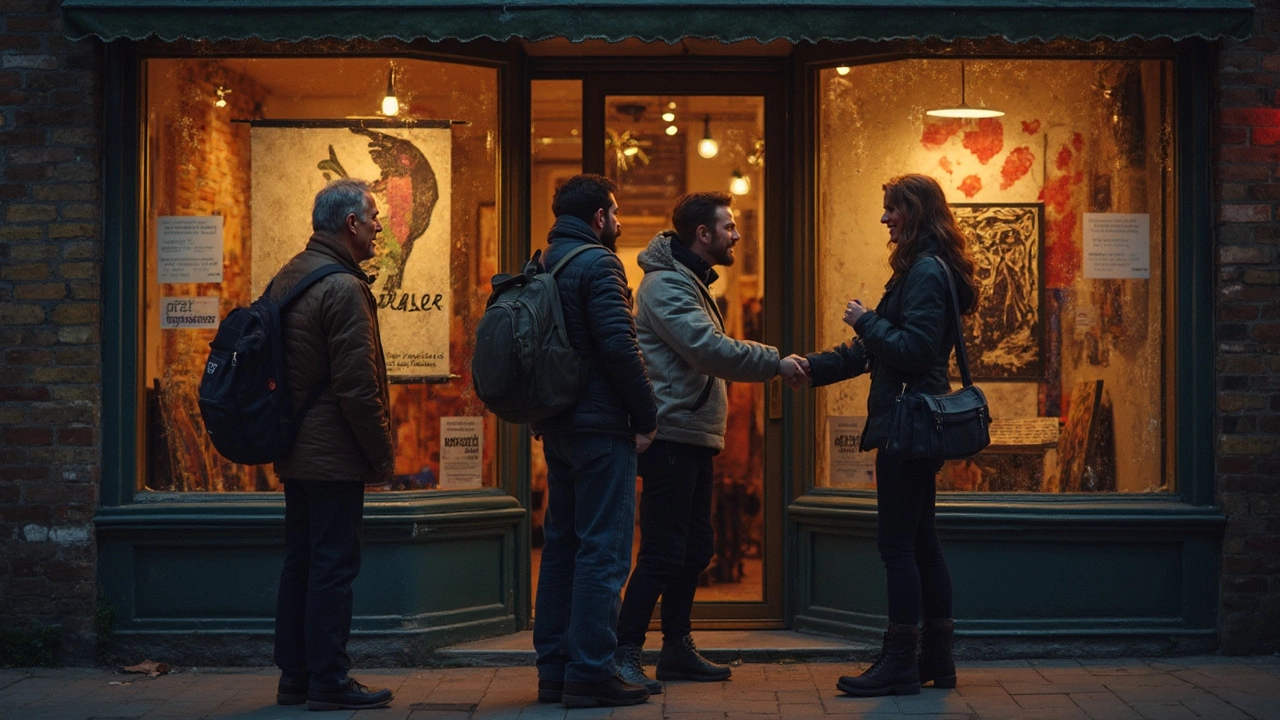
Handling Rejection (and Turning It Around)
Rejection stings, no question about it—even the best in the art galleries scene have seen their share of "thanks, but no thanks." Ruth Asawa, Yayoi Kusama, even Van Gogh—these legends all faced cold shoulders from galleries at some point. Do you know what they had in common? They didn’t quit. Sometimes the difference between an emerging artist and a successful one is how you pick yourself up after getting that dreaded email.
Here’s what doesn't work: stewing over silence, venting on social media, or hitting "reply all" with a rant. What actually helps? Learning from feedback. Some galleries will give you a line or two about what’s missing, but you have to ask. A quick, polite thank you can open the door for some rare, honest advice. Example: “Thank you for your time. I’d appreciate any suggestions for improving my portfolio in the future.” It’s simple, and it works more often than you think.
Let’s get practical. Here’s what you can do when you get rejected by a gallery:
- Reach out—but keep it short, positive, and professional.
- Update your portfolio based on any feedback. Could be as basic as better photos or a clearer artist statement.
- Keep track. Plenty of artists use a spreadsheet to list where they've submitted, what feedback they got, and what changes they made. It helps avoid sending the same mistakes twice.
- Stay visible. Keep posting your work online. Some curators have admitted to discovering an artist through Instagram after rejecting them initially.
- Reconnect after progress. You fixed your weak spots? Wait a few months, then shoot the gallery an update if you’ve really improved or have new work that fits their tastes.
For a rough idea of just how common rejection is, check out this mini table of stats from real-life surveys of artists trying to break into art galleries:
| # of Submissions per Year | Average Accepted | Rejection Rate |
|---|---|---|
| 10+ | 1-2 | 80-90% |
| 5-10 | 0-1 | 85-100% |
In short, almost no one nails it on the first try. If a gallery rejected you, they probably rejected nine others the exact same day. Turning that "no" into a "not yet" is your actual job here. Stay at it, tweak your approach, and remember—the artists who keep going are the ones that finally get in.
